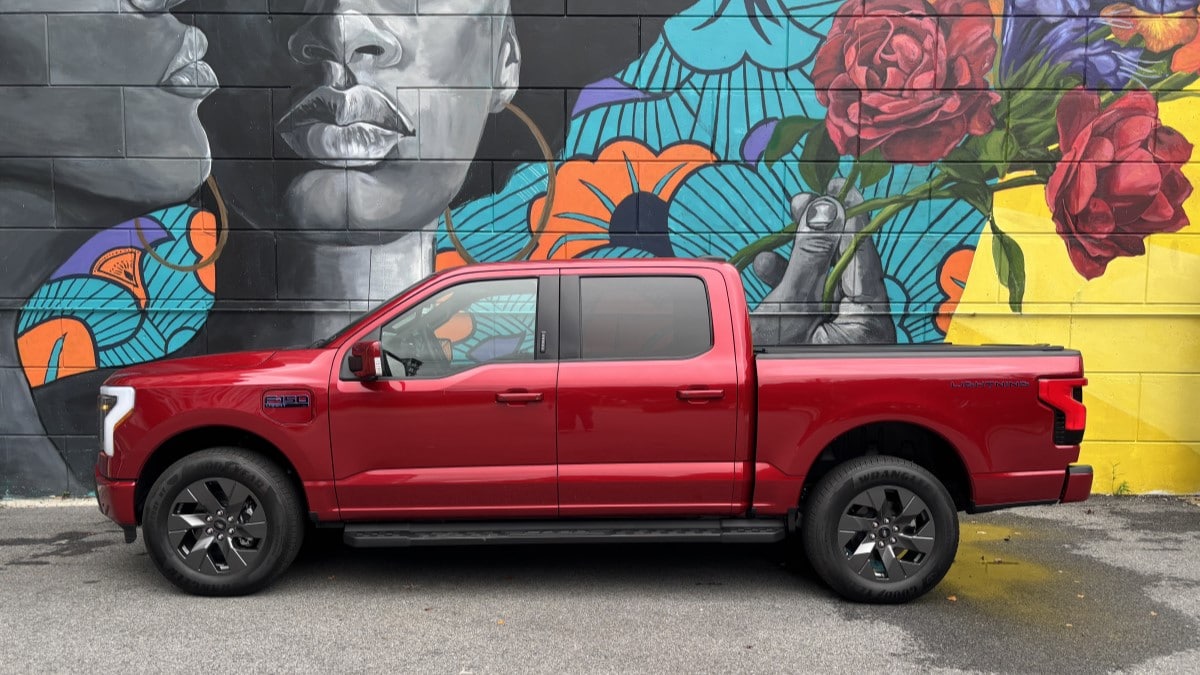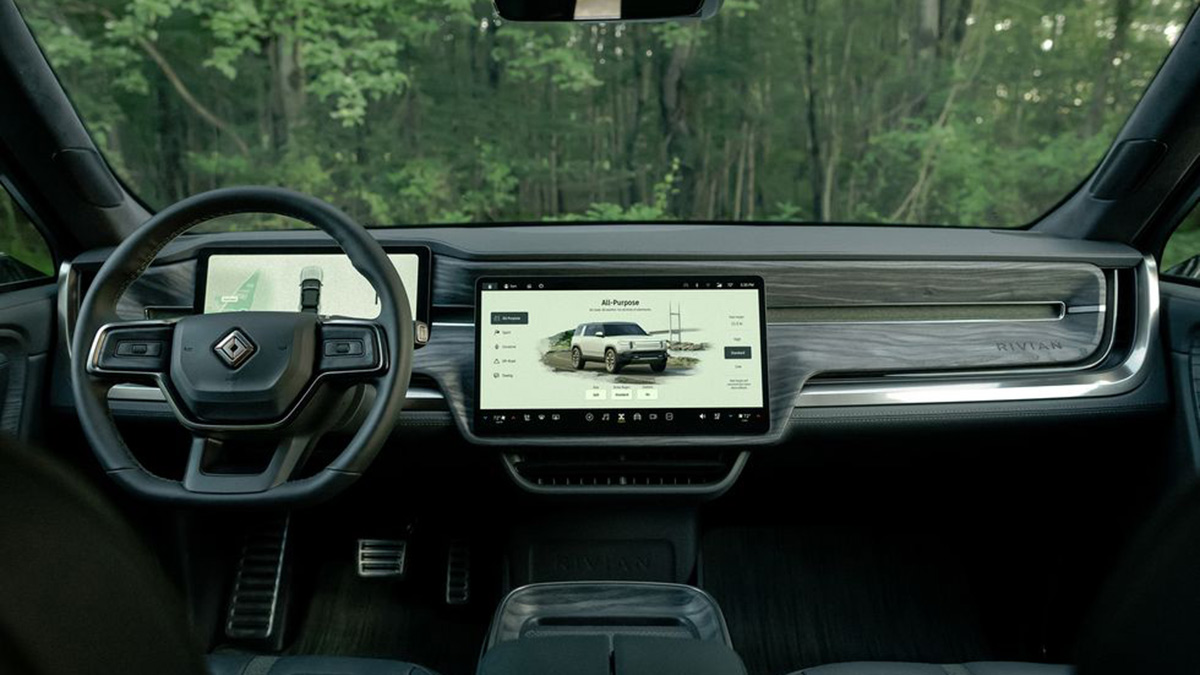It’s an old story. The kid wanted to go fishing on a Saturday morning. So, we hopped in the truck to head for Shenandoah National Park. We’re on our way, in bumper-to-bumper 50 mph traffic out of the Washington, D.C.-area where we live.
But my hands aren’t on the wheel, my feet aren’t on the pedals, and the truck is burning no gasoline. That’s a new story.
Ford’s BlueCruise hands-free highway driving system is handling most of the driving. I’m nervous about it — eyes glued to the car in front, hands hovering over the wheel, ready to take over. But BlueCruise is doing a great job handling heavy traffic. I’m just not used to this yet.
And the truck is electric. This version has 320 miles of range — easily enough for us to make the 2-hour trek to the Thornton River and back without a worry.
My test vehicle is a 2024 Ford F-150 Lightning in Lariat trim with the optional BlueCruise system, the Pro Power Onboard package (with enough outlets, Ford says, to power “a residential construction job site for three days on a single charge”), and a pricey tonneau cover. It carries a sticker price of $86,585.
This one is too expensive for the federal government’s $7,500 federal electric vehicle (EV) tax rebate. Several Lightning trims fit under the $80,000 line needed to qualify for the discount.
That’s pricey. But trucks are pricey now. According to Kelley Blue Book parent company, Cox Automotive, the average full-size truck now sells for over $65,000 — and this one is luxurious. Its price isn’t much higher than luxury versions of gas-powered trucks.
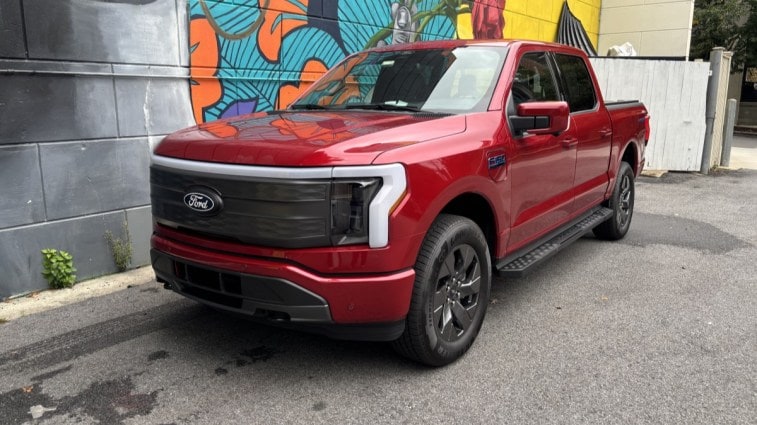
A Word on Electric Trucks
The Lightning made news as the first electric pickup from a major manufacturer and then made news for falling short of sales expectations. That’s true, but the story is more complicated than a headline can convey.
Like many automakers, Ford pushed into electric vehicles a little before the market was ready. That can be smart business — they need to be prepared for millions of sales before they get here, not after. Federal tax incentives helped them build factories, but only the companies that got there first got those incentives.
Acting early also allows Ford to get rookie mistakes out of the way while the market is small. Companies that bring out electric trucks later will have to build their factories without government help and make their mistakes with more buyers watching.
It’s also playing a distant second fiddle to the Tesla Cybertruck in sales. The Cybertruck has been a sales smash — America’s best-selling vehicle of any kind priced over $100,000 for four months now.
But there’s likely a limited audience for a truly weird-looking vehicle like the Cybertruck. Someday soon, most people who want something that unusual will have one.
The Lightning, on the other hand, looks and drives pretty much like the Ford F-Series — the best-selling vehicle in America for 47 years. Once most American truck shoppers come around on electric trucks, they’ll likely want one like the gas-powered truck they like best.
Building the Lightning early and making it look like a gas-powered truck was probably a savvy business move. It hasn’t paid off yet, and it wasn’t designed to.
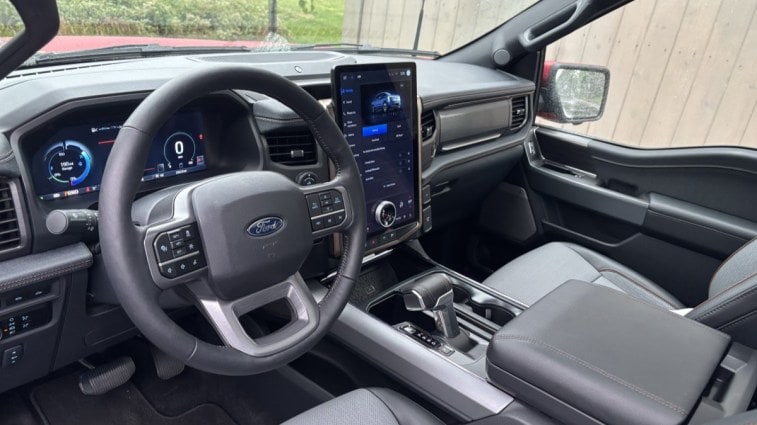
It’s Pretty Much a Normal Truck, Though a Nice One
The biggest news about the Lightning is how, well, normal it is.
It handles a lot like any other F-150, although the steering effort may be a bit lighter.
It accelerates much faster — EVs make 100% of their torque available instantly, rather than building it up over a few seconds like gas engines do. This truck can get from zero to 60 mph in 3.8 seconds, Ford says. That’s absurdly fast for a full-size truck and wildly unnecessary. But you get used to it fast and, in daily driving, just press the accelerator pedal gently so you don’t scare anyone.
I don’t have access to a Level 2 home charger where I live, but since I drive less than 20 miles a day most of the time, I never needed one. I charged it from a plain old wall outlet and kept enough juice in it for the weekend trip without wasting much thought.
It even looks pretty much like a gas-powered F-150. Its faux grille and thin LED bracket lights are different, but its dimensions and usability are pretty much the same. The tailgate includes a helpful fold-out bed step with a handle that my middle-aged knees appreciated.
The Lightning’s cabin is also very similar to that of the gas-powered truck. My Lariat had a 12-inch portrait-mounted touchscreen (Ford insists on calling it a “productivity screen”), larger than the one you’d find in a gas-powered Lariat. Otherwise, you could easily mistake one for the other.
Leather-trimmed seats, heated and ventilated for front-seat passengers, add comfort and easy cleaning.
Given the popularity of the F-150, that similarity seems like the right move.
It Only Gets a Double-Take When You Open the Frunk
You buy a Cybertruck if you want everyone to look at you. You buy a Lightning if you prefer to go about your business mostly unnoticed. The truck only attracted attention when I opened the frunk (front trunk).
Pop that to get the tackle box out and, yes, a few hikers look over with surprise on their faces. But that will be a common enough sight to escape notice eventually.
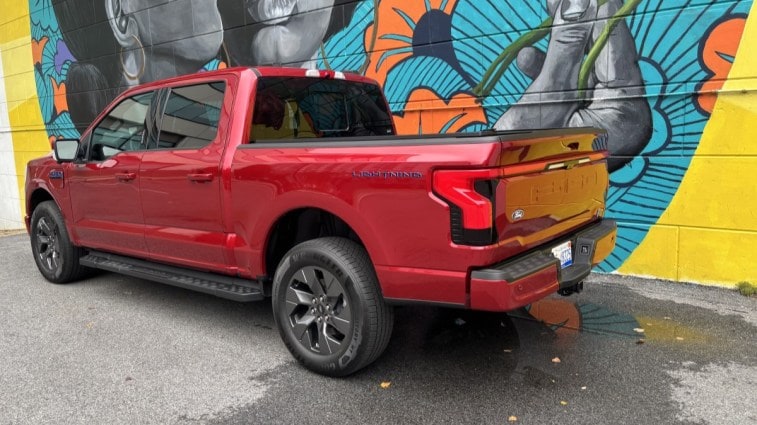
BlueCruise Is Exceptionally Smooth
BlueCruise may be the best hands-free driving system on the market. It has won the only major comparison test in the industry two years running.
Bumper-to-bumper traffic at highway speed is probably the most nerve-wracking test for such a system — good conditions for a hard crash. It handled that about as smoothly as I would have. I tried turning it on and off, keeping my hands on the wheel so passengers wouldn’t know whether it was on or off, and asking if anyone could tell. Most of the time, passengers couldn’t reliably tell whether the system or a human was steering.
Caveats? Not Many
The Lightning is, quite simply, an easy truck to live with.
I might not buy one to tow with. EVs and gas-powered trucks lose a lot of range when towing, but gas stations easily outnumber public chargers, plus gas tanks refill faster than batteries.
But, for most of us, the Lightning could replace a gas-powered truck in day-to-day use quite pleasantly.
Truck buyers are a skeptical lot, for understandable reasons. It will take many of them time, and improved public infrastructure, to decide an electric truck will meet their needs.
That’s fine with Ford. The company will keep building gas- and hybrid-powered F-150s for the foreseeable future. But, for those ready to make the change now, Ford has an electric truck that serves as a one-to-one replacement. By the time the masses come around, the company will have a lot of experience building these.
